Now 8/10 too.
New November Bingo: INSECTS! 11th numbers posted
Moderators: rcperryls, Rose, karen4bells, Serinde
- Squirrel
- Posts: 16821
- Joined: Sun Aug 30, 2009 4:33 am
- Location: exChristhcurch NZ, now Brisbane, Australia
Re: New November Bingo: INSECTS! 8th numbers posted
I too enjoy David Attenborough - his Wildlife in Africa was on on Sunday and great to watch.
Now 8/10 too. (I think)
(I think)
Now 8/10 too.
Sally in Brisbane Australia
WIPS
Christmas Stocking from World of Cross Stitching mag. 262
WIPS
Christmas Stocking from World of Cross Stitching mag. 262
- stitchingmae
- Posts: 3253
- Joined: Tue Jan 26, 2010 12:34 pm
- Location: USA~Georgia
Re: New November Bingo: INSECTS! 8th numbers posted
7/10
Squirrel we picked a lot of the same numbers apparently
Squirrel we picked a lot of the same numbers apparently
- Squirrel
- Posts: 16821
- Joined: Sun Aug 30, 2009 4:33 am
- Location: exChristhcurch NZ, now Brisbane, Australia
Re: New November Bingo: INSECTS! 8th numbers posted
Seems like it also Cairee is along with us. They must have been floating in the air when we picked them 
Sally in Brisbane Australia
WIPS
Christmas Stocking from World of Cross Stitching mag. 262
WIPS
Christmas Stocking from World of Cross Stitching mag. 262
Re: New November Bingo: INSECTS! 8th numbers posted
Today's picks are:
16. Phthiraptera
21. Raphidioptera
Phthiraptera-the louse (makes me itchy just saying it)
Lice are very well known to humans because of the stigma attached to them, but interestingly they're merely an annoyance and very rarely cause their hosts lasting harm (if any harm at all). There are well over 3,000 known species (this order has been recently split, but the jury's still out on a final grouping), and only 3 of those affect humans. Almost all louse species are scavengers, eating detritus of all sorts. There most likely multiple species in every single house in the world, no matter how clean it is. They're eating shed skin, hair, food particles, etc. Very few in comparison feed directly from other animals (blood or dermal secretions like oils), and are almost always specific to a type or species of animal--and can even be specific to regions of the body.
The stigma most of us likely know well is that attached to head lice (not to mention lice that inhabit other parts where hair grows...which is a different species!), particularly during the school year. Many think that lice infestations are often started by some dirty poor kid whose parents don't take care of them. The irony here is that human head lice prefer cleaner heads, but will take what they can get. My own son came home with lice in kindergarten, but luckily I could shave his head and boom, they're gone. Unfortunately I have incredibly thick hair and I managed to pick a few up, and that box you get from the pharmacy didn't do the trick. On a hunch I tried flea shampoo for cats, and worked like a charm! TMI for some of you maybe, but I try to stand up for the louse when I can in terms of relative cleanliness--and of course for kids who tend to get the blame for bringing them to school.
Even though I'm a friend to insects, these still make me itchy just thinking about them!
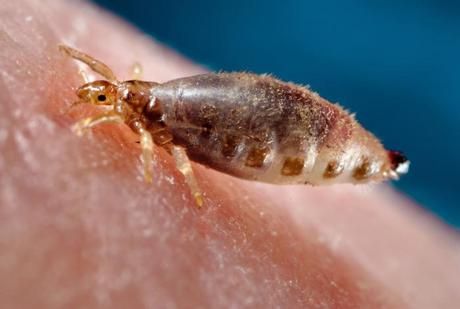
Raphidioptera, the snakeflies
This is a small order with just over 200 known species. Their range around the world is fairly specific; temperate European and Asian regions and a few specific areas in the western US and the Rocky Mountains. They're fairly odd looking, in that their prothorax is elongated (the part of the thorax-or middle segment-closest to the head) so they look like they have really long necks. Their legs are similar in length and not proportionate to their long bodies, hence their common name. Personally, I think they kind of look like the insect version of a horse or dachsund.
These insects are predatory both as larvae and adults, and are closely related to neuropterans (the ant lions or doodlebugs). Larvae can take up to two years to develop enough to go into a pupal state. Interestingly, as pupae they're still mobile (unlike butterflies and many other insects), and typically move from the original 'cell' the larvae creates for its pupae self to develop in to a safer or more ideal location for emerging as an adult.
A couple of snakefly images. Species in this order are fairly similar, with few variation in bodily proportions:
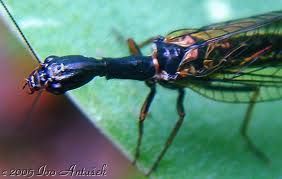
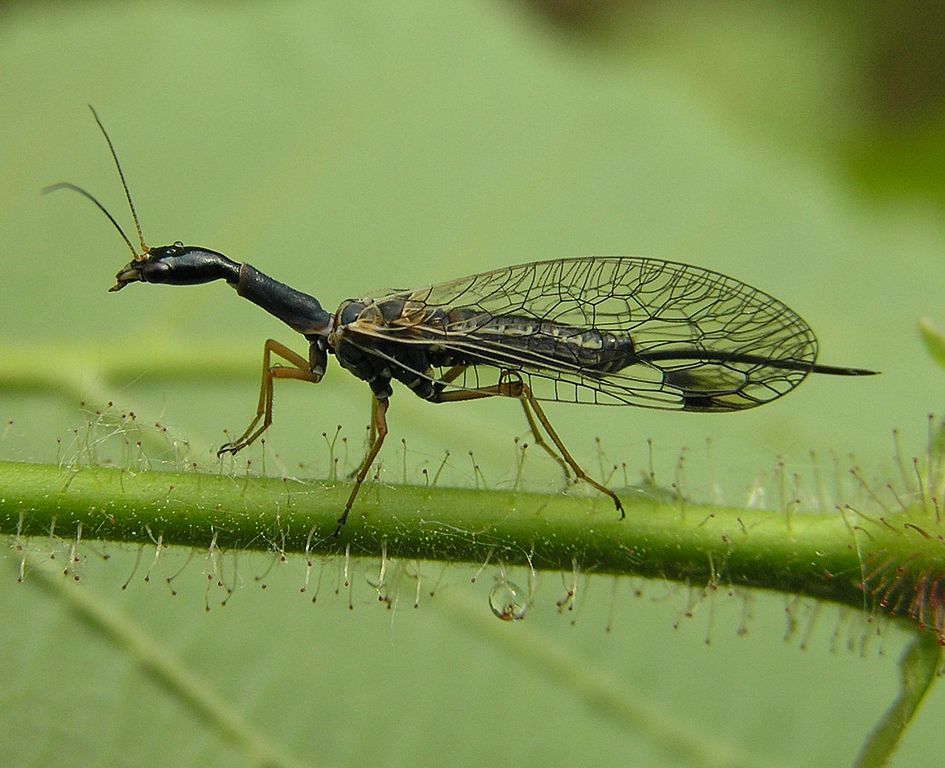
16. Phthiraptera
21. Raphidioptera
Phthiraptera-the louse (makes me itchy just saying it)
Lice are very well known to humans because of the stigma attached to them, but interestingly they're merely an annoyance and very rarely cause their hosts lasting harm (if any harm at all). There are well over 3,000 known species (this order has been recently split, but the jury's still out on a final grouping), and only 3 of those affect humans. Almost all louse species are scavengers, eating detritus of all sorts. There most likely multiple species in every single house in the world, no matter how clean it is. They're eating shed skin, hair, food particles, etc. Very few in comparison feed directly from other animals (blood or dermal secretions like oils), and are almost always specific to a type or species of animal--and can even be specific to regions of the body.
The stigma most of us likely know well is that attached to head lice (not to mention lice that inhabit other parts where hair grows...which is a different species!), particularly during the school year. Many think that lice infestations are often started by some dirty poor kid whose parents don't take care of them. The irony here is that human head lice prefer cleaner heads, but will take what they can get. My own son came home with lice in kindergarten, but luckily I could shave his head and boom, they're gone. Unfortunately I have incredibly thick hair and I managed to pick a few up, and that box you get from the pharmacy didn't do the trick. On a hunch I tried flea shampoo for cats, and worked like a charm! TMI for some of you maybe, but I try to stand up for the louse when I can in terms of relative cleanliness--and of course for kids who tend to get the blame for bringing them to school.
Even though I'm a friend to insects, these still make me itchy just thinking about them!

Raphidioptera, the snakeflies
This is a small order with just over 200 known species. Their range around the world is fairly specific; temperate European and Asian regions and a few specific areas in the western US and the Rocky Mountains. They're fairly odd looking, in that their prothorax is elongated (the part of the thorax-or middle segment-closest to the head) so they look like they have really long necks. Their legs are similar in length and not proportionate to their long bodies, hence their common name. Personally, I think they kind of look like the insect version of a horse or dachsund.
These insects are predatory both as larvae and adults, and are closely related to neuropterans (the ant lions or doodlebugs). Larvae can take up to two years to develop enough to go into a pupal state. Interestingly, as pupae they're still mobile (unlike butterflies and many other insects), and typically move from the original 'cell' the larvae creates for its pupae self to develop in to a safer or more ideal location for emerging as an adult.
A couple of snakefly images. Species in this order are fairly similar, with few variation in bodily proportions:


Blog: http://ketta-ketta.blogspot.com/" target="_blank" target="_blank
WIP: http://www.crossstitchforum.com/viewtop ... =6&t=12786" target="_blank" target="_blank (bug)
http://www.crossstitchforum.com/viewtop ... =6&t=13419" target="_blank (Serenity)
WIP: http://www.crossstitchforum.com/viewtop ... =6&t=12786" target="_blank" target="_blank (bug)
http://www.crossstitchforum.com/viewtop ... =6&t=13419" target="_blank (Serenity)
Re: New November Bingo: INSECTS! 9th numbers posted
none for me today!
I do not miss delousing the house after bringing home a lice warning.
I do not miss delousing the house after bringing home a lice warning.
Mables 2016 SAL
Holland Springtime Mandalla (chatelaine)
Re: New November Bingo: INSECTS! 9th numbers posted
None for me or Niki. Which is okay with me about the lice. I'm itching now just thinking about it.
Carole

Carole
WIPs
Star Wars Afghan:Chewbaca
HAEDs:
O Kitten Tree
Dancing with the Cat
Everything else "on hold"
2022 Finished: Star Wars Afghan: Princess Leia, Obi-Wan Kenobi, Yoda, Finn, Rey, Poe, Han Solo,Darth Vader, BB8,Luke Skywalker
Star Wars Afghan:Chewbaca
HAEDs:
O Kitten Tree
Dancing with the Cat
Everything else "on hold"
2022 Finished: Star Wars Afghan: Princess Leia, Obi-Wan Kenobi, Yoda, Finn, Rey, Poe, Han Solo,Darth Vader, BB8,Luke Skywalker
Re: New November Bingo: INSECTS! 9th numbers posted
Sorry I haven't been keeping up! Being out of town will do that.
I just went and checked all my numbers and I'm up to 7/10.
I just went and checked all my numbers and I'm up to 7/10.
**Signature Under Construction**
(will update soon with current WIPs and other info )
)
(will update soon with current WIPs and other info
- nachosmiley
- Posts: 2259
- Joined: Sun Mar 27, 2011 2:46 pm
- Location: Rugby, England
Re: New November Bingo: INSECTS! 9th numbers posted
Awww none for me today. Kinda glad I don't have lice! 
W.I.P.
My Altair chart 66.11%
Chatelaine Mystery XV-Deep Blue Sea 6/12
HAED Mini Fairy Book 43.55%
HAED Lady in the Meadow 13.07%
Finishes
Duality
Zelda valentine
Beware of the DM
HAED SK Oak King
Magic Dragon
My Altair chart 66.11%
Chatelaine Mystery XV-Deep Blue Sea 6/12
HAED Mini Fairy Book 43.55%
HAED Lady in the Meadow 13.07%
Finishes
Duality
Zelda valentine
Beware of the DM
HAED SK Oak King
Magic Dragon
Re: New November Bingo: INSECTS! 9th numbers posted
Still 5/10 little ones!
Re: New November Bingo: INSECTS! 9th numbers posted
Apologies for missing another day-I literally lost track of time while studying (which rarely happens, because who doesn't want a break from that?).
Today's picks are:
15. Zoraptera
29. Hymenoptera
Zoraptera, the zorapterans.
This is a *really* small order that contains only 39 living species. The group's classifications are in constant debate, so if you study insects and like to argue..this is a great one to focus on.
Their Latin name means 'pure wingless', but with fairly recent discoveries, the name no longer fits. For a long time, it was thought they were completely wingless, and winged forms were that to be different species. It wasn't until DNA sequences were compared that it was found that species in this order are polymorphic: adult forms can be different. In the case of zorapterans, they're either wingless, blind, and usually without pigment and thrive in dark, damp habitats. However, should conditions become tough, overcrowded, or intolerable, winged forms will arise that have very basic compound eyes. Wings are easily shed (kind of like those on termites or ants during mating flights) once new locations are found.
A wingless little zorapteran:
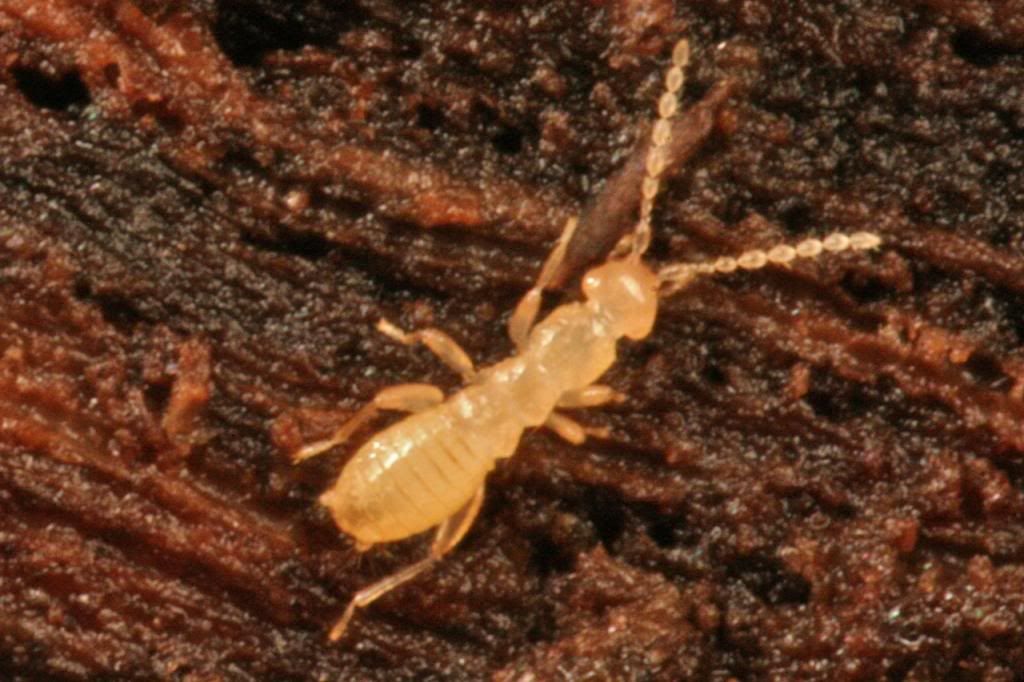
Hymenoptera: ants, wasps, and bees!
This is another one of the BIG orders of insects and contains some incredibly important members that are integral to us, the planet, and countless other organisms. There are about 150,000 described species with LOTS more yet to be described. Sawflies, wasps, ants, and bees are all in this group. Their Latin name means 'membrane wing'.
Hymenopterans are considered the most 'highly derived' order, meaning that they're the most evolutionarily advanced in several ways. Many form colonies, and most of those that don't exist in large colonies are social in some way. A whole group of ants referred to as leafcutters actually farm fungus. Colonies exhibit 'division of labor', where multiple castes perform specific duties like foraging, fighting, protection, building, and caring for larvae and pupae, just to name a few.
I'm going to focus on a few just to highlight some of the things that just might blow your mind:
This guy is a 'turtle' ant or 'platehead' ant. I should say 'gal', as almost every single member of a large colony of hymenopterans are female. This one has a very specific role, and that's protecting the colony from invaders-but it's not exactly what you might think. The colonies tend to live in cork trees, where they create tunnel systems in the dead part of the bark. To keep out potential invaders, this ant backs into a tunnel entrance once all the other ants are inside and plugs the hole with her head. She can fight if needed, but her job is to literally be a door.
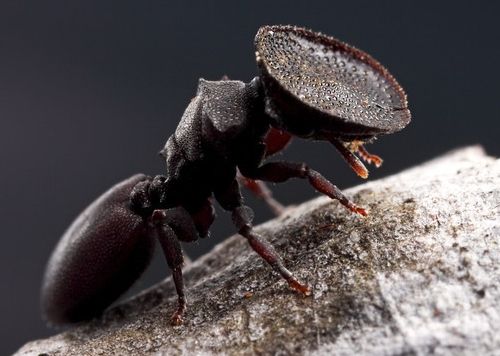
Here's a male orchid wasp. How do we know it's a male? Well, if you look closely at the plant he's on, you can see he's perched on a weird-looking flower; an orchid. This specific orchid species' flower looks very much like a female wasp. In reality, many species of female orchid wasps are wingless, and when they emerge from their pupa, they crawl up a blade of grass and emit pheromones to attract males, who show up and pick up the female, mating with her on the wing. What this orchid does is mimic the appearance of a female on a stem, and the poor male tries to fly off with 'her' and mate, but...she's stuck. In the process, pollen packets get stuck to him, and he eventually flies off to find a more 'willing' female. Chances are, he'll find another orchid mimicking a female and pollinate it while trying to fly away with the impostor.
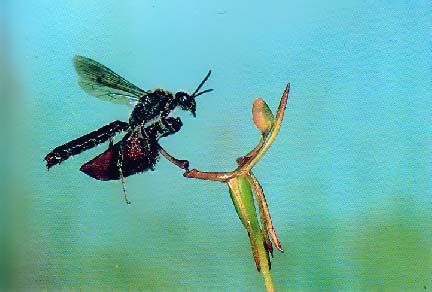
And here is probably my favorite group, the orchid bees. I'm considering doing graduate school work with these bees, as they really do blow my mind.
Orchid bees have a close relationship with orchids, similar to the orchid wasps. However, at least the bees get 'something' out of it (but again, it may not be what you think. It's the male bees who visit the orchids, but it's not for food (orchids are stingy with nectar and pollen as food). Male orchid bees make perfume-really-by combining different compounds in a special compartment on their rear-most legs. They use it to attract females (and other males, for 'brawls'), and collect the different compounds from various orchid species. The orchids 'hide' these smelly treats in such a way that the bees get stuck with a pollen packet, and as with the wasps, inadvertently pollinate as they visit different orchids. They are fast, strong fliers and will travel up to 100km a DAY to find *just* the right ingredients!
This fellow is my desktop background right now:
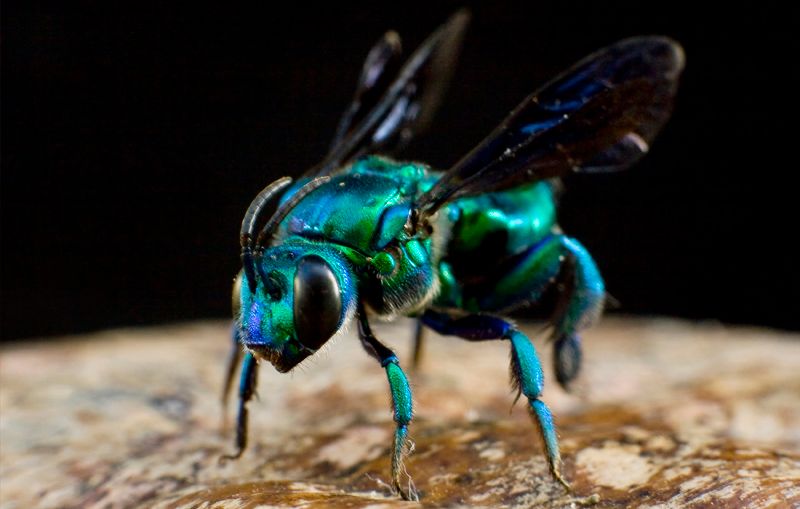
Today's picks are:
15. Zoraptera
29. Hymenoptera
Zoraptera, the zorapterans.
This is a *really* small order that contains only 39 living species. The group's classifications are in constant debate, so if you study insects and like to argue..this is a great one to focus on.
Their Latin name means 'pure wingless', but with fairly recent discoveries, the name no longer fits. For a long time, it was thought they were completely wingless, and winged forms were that to be different species. It wasn't until DNA sequences were compared that it was found that species in this order are polymorphic: adult forms can be different. In the case of zorapterans, they're either wingless, blind, and usually without pigment and thrive in dark, damp habitats. However, should conditions become tough, overcrowded, or intolerable, winged forms will arise that have very basic compound eyes. Wings are easily shed (kind of like those on termites or ants during mating flights) once new locations are found.
A wingless little zorapteran:

Hymenoptera: ants, wasps, and bees!
This is another one of the BIG orders of insects and contains some incredibly important members that are integral to us, the planet, and countless other organisms. There are about 150,000 described species with LOTS more yet to be described. Sawflies, wasps, ants, and bees are all in this group. Their Latin name means 'membrane wing'.
Hymenopterans are considered the most 'highly derived' order, meaning that they're the most evolutionarily advanced in several ways. Many form colonies, and most of those that don't exist in large colonies are social in some way. A whole group of ants referred to as leafcutters actually farm fungus. Colonies exhibit 'division of labor', where multiple castes perform specific duties like foraging, fighting, protection, building, and caring for larvae and pupae, just to name a few.
I'm going to focus on a few just to highlight some of the things that just might blow your mind:
This guy is a 'turtle' ant or 'platehead' ant. I should say 'gal', as almost every single member of a large colony of hymenopterans are female. This one has a very specific role, and that's protecting the colony from invaders-but it's not exactly what you might think. The colonies tend to live in cork trees, where they create tunnel systems in the dead part of the bark. To keep out potential invaders, this ant backs into a tunnel entrance once all the other ants are inside and plugs the hole with her head. She can fight if needed, but her job is to literally be a door.

Here's a male orchid wasp. How do we know it's a male? Well, if you look closely at the plant he's on, you can see he's perched on a weird-looking flower; an orchid. This specific orchid species' flower looks very much like a female wasp. In reality, many species of female orchid wasps are wingless, and when they emerge from their pupa, they crawl up a blade of grass and emit pheromones to attract males, who show up and pick up the female, mating with her on the wing. What this orchid does is mimic the appearance of a female on a stem, and the poor male tries to fly off with 'her' and mate, but...she's stuck. In the process, pollen packets get stuck to him, and he eventually flies off to find a more 'willing' female. Chances are, he'll find another orchid mimicking a female and pollinate it while trying to fly away with the impostor.

And here is probably my favorite group, the orchid bees. I'm considering doing graduate school work with these bees, as they really do blow my mind.
Orchid bees have a close relationship with orchids, similar to the orchid wasps. However, at least the bees get 'something' out of it (but again, it may not be what you think. It's the male bees who visit the orchids, but it's not for food (orchids are stingy with nectar and pollen as food). Male orchid bees make perfume-really-by combining different compounds in a special compartment on their rear-most legs. They use it to attract females (and other males, for 'brawls'), and collect the different compounds from various orchid species. The orchids 'hide' these smelly treats in such a way that the bees get stuck with a pollen packet, and as with the wasps, inadvertently pollinate as they visit different orchids. They are fast, strong fliers and will travel up to 100km a DAY to find *just* the right ingredients!
This fellow is my desktop background right now:

Blog: http://ketta-ketta.blogspot.com/" target="_blank" target="_blank
WIP: http://www.crossstitchforum.com/viewtop ... =6&t=12786" target="_blank" target="_blank (bug)
http://www.crossstitchforum.com/viewtop ... =6&t=13419" target="_blank (Serenity)
WIP: http://www.crossstitchforum.com/viewtop ... =6&t=12786" target="_blank" target="_blank (bug)
http://www.crossstitchforum.com/viewtop ... =6&t=13419" target="_blank (Serenity)
Re: New November Bingo: INSECTS! 10th numbers posted
The rare Zoraperans bring me to 7/10 today.  None for Niki though. I was sure hoping I'd be able to shout a BINGO for her. That would have been fun!
None for Niki though. I was sure hoping I'd be able to shout a BINGO for her. That would have been fun!
Carole

Carole
WIPs
Star Wars Afghan:Chewbaca
HAEDs:
O Kitten Tree
Dancing with the Cat
Everything else "on hold"
2022 Finished: Star Wars Afghan: Princess Leia, Obi-Wan Kenobi, Yoda, Finn, Rey, Poe, Han Solo,Darth Vader, BB8,Luke Skywalker
Star Wars Afghan:Chewbaca
HAEDs:
O Kitten Tree
Dancing with the Cat
Everything else "on hold"
2022 Finished: Star Wars Afghan: Princess Leia, Obi-Wan Kenobi, Yoda, Finn, Rey, Poe, Han Solo,Darth Vader, BB8,Luke Skywalker
Re: New November Bingo: INSECTS! 10th numbers posted
the platehead ant has a rather boring job!
none for me today, still at 8/10
none for me today, still at 8/10
Mables 2016 SAL
Holland Springtime Mandalla (chatelaine)
- stitchingmae
- Posts: 3253
- Joined: Tue Jan 26, 2010 12:34 pm
- Location: USA~Georgia
Re: New November Bingo: INSECTS! 10th numbers posted
none x2 days LoL
i'm still at 7/10
i'm still at 7/10
- nachosmiley
- Posts: 2259
- Joined: Sun Mar 27, 2011 2:46 pm
- Location: Rugby, England
Re: New November Bingo: INSECTS! 10th numbers posted
One more for me now up to 8/10 
That orchid bee is such a handsome fellow isn't he? No wonder you have him as your desktop picture it is a very striking image!
That orchid bee is such a handsome fellow isn't he? No wonder you have him as your desktop picture it is a very striking image!
W.I.P.
My Altair chart 66.11%
Chatelaine Mystery XV-Deep Blue Sea 6/12
HAED Mini Fairy Book 43.55%
HAED Lady in the Meadow 13.07%
Finishes
Duality
Zelda valentine
Beware of the DM
HAED SK Oak King
Magic Dragon
My Altair chart 66.11%
Chatelaine Mystery XV-Deep Blue Sea 6/12
HAED Mini Fairy Book 43.55%
HAED Lady in the Meadow 13.07%
Finishes
Duality
Zelda valentine
Beware of the DM
HAED SK Oak King
Magic Dragon
Re: New November Bingo: INSECTS! 10th numbers posted
One more for me: 6/10!
Re: New November Bingo: INSECTS! 10th numbers posted
Today there are 3 picks since I've missed a couple of days this week. I know some of you are getting kind of close.... so here they are:
3. Ephemeroptera
6. Isoptera
24. Diptera
Ephemeroptera, the mayflies.
This order of insects is thought to be the oldest group of flying insects. There are about 2,500 known species, nearly 650 are found in North America. When most people think of mayflies, they usually picture the huge swarms seen on lakes, but actually, relatively few species inhabit lakes. Most are found in small streams, ponds, and other water features.
Most live only a matter of hours as adults, never eating, only mating. The mouth parts you might see are completely vestigial, and where their digestive organs would be, there is only air. Their sole function in their adult flying form is reproduction. In essence, mayflies exhibit one of the most likely reasons that insects evolved flight: dispersal (get as many of your offspring spread as far and wide as you can). They spend most of their lives as nymphs, living in waterways feeding on algae, diatoms, and a few are even predatory.
A mayfly nymph:
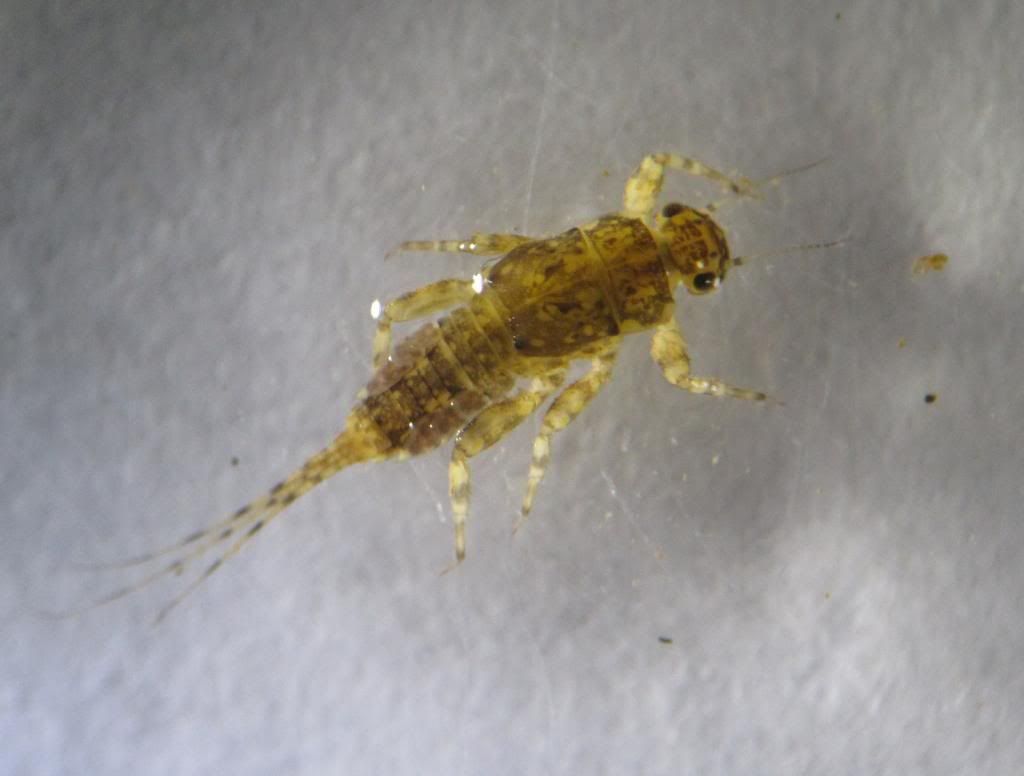
and an adult:
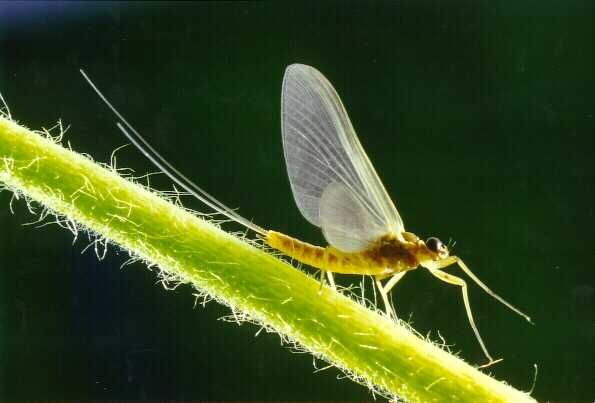
Isoptera, the termites.
The termites have recently been combined with the order that includes cockroaches, but to make sure I had 30 choices for the bingo, I kept it split (plus...I'm not sure how the termites feel about being considered 'friends of cockroaches'!
Termites are incredibly social, building huge, complex colonies. At the heart of a colony is a queen (who can live for decades...up to a staggering 45 years!) and a king (who can live just as long) who lives and mates with her for life. Mature colonies can contain millions of individual termites, and with a queen that can lay 20,000 to 30,000 eggs a day, it's easy to see how these numbers are accomplished.
These incredible animals process an astounding amount of cellulose-based biomass, and are an integral part of the planet's recycling system. Some cultivate fungus, but all consume some sort of cellulose. No multicellular organism can process cellulose, and like cows and other ruminants, termites have microbes in their digestive tracts that help break down the parts of cellulose that they can't. Often in developed countries, termites are considered pests...some do eat wood.
The manner in which termites construct above-ground nests (some do have underground nests, and even nests you can see usually have extensive parts underground, too) have been highly studied. Even engineers have taken note, and all over the world, particularly in places with constantly hot climates, buildings engineered with termite nests in mind have been constructed that require little or no air conditioning to cool them. Termites orient their nests so the 'face' are east-west, and internal construction facilitates air flow that removes stale air and sucks in fresh air. The nest acts as a radiator to heat up in the morning and the central-air 'feature' keeps the nest from getting too hot.
An above-ground nest:
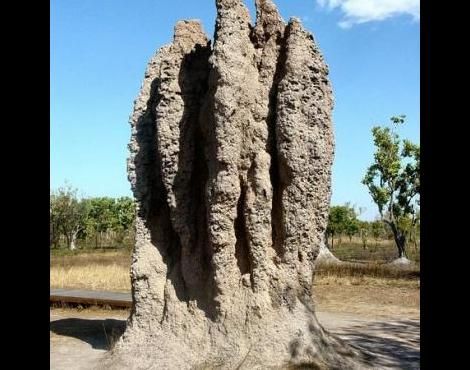
A humongous queen:
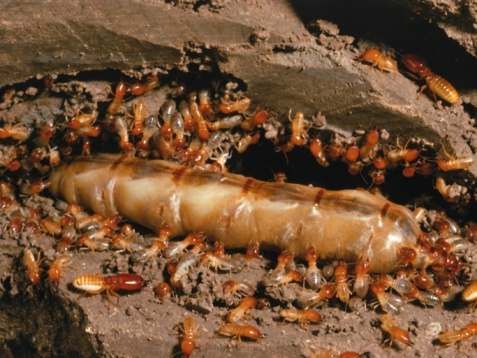
And her subjects, a winged adult ready for mating flight, a soldier, and a worker (from left):
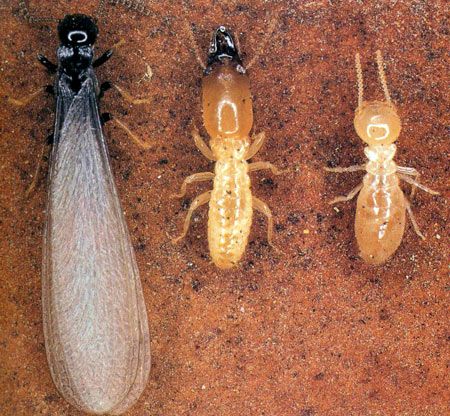
Diptera, the true flies.
We all know what flies are...those annoying, buzzing things that always seem to be where we don't want them, potentially spreading something icky and just being general pests. Mosquitoes, craneflies ('mosquito-eaters' to some, though some species are herbivorous), and of course house flies are all included in this group. They're characterized by only having one 'true' pair of wings, with the other pair (behind the actual wings) having evolved into 'halteres', which stabilize a fly's flight and give it a lot of maneuverability.
With over 120,000 known species, dipterans are one of the 'major' insect orders. The fruit fly is heavily studied, and was key in unraveling the secrets of DNA. Flies are incredibly diverse, taking advantage of many niches and exploiting them to such great degree that we still don't fully understand some aspects of their survival. For example, the mosquitoes responsible for the spread of malaria have been studied for decades to figure out how to stop them from being a vector (carrier) for the disease. They're specifically locked into humans as their blood hosts and have influenced human evolution in such a way that shows many thousands of years have gone into that relationship (sickle-cell anemia is a result of this co-evolution; the disease is a result of an adaptation to combat malaria).
Dipteran diversity includes some interesting species. As with the bees, wasps, and ants, I'll share some images of the more unusual (and somewhat more appealing) flies.
Not sure what this fellow's story is, but he "really" wants us to see his abdomen:
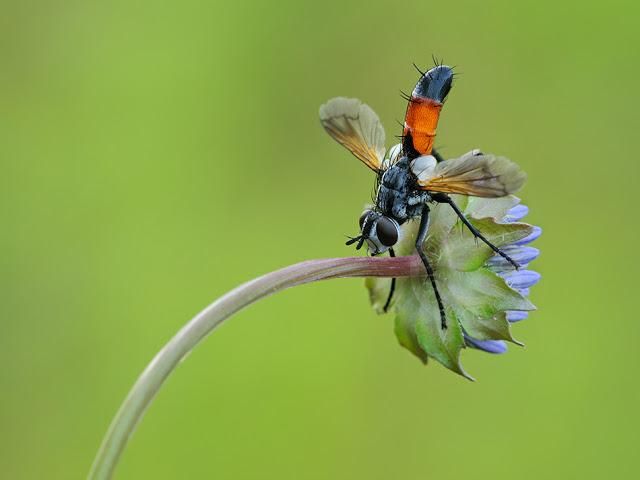
A jumping spider mimic:
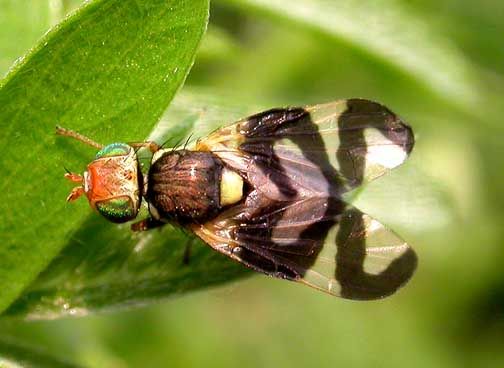
A wasp mimic (yes, that's really a fly!):
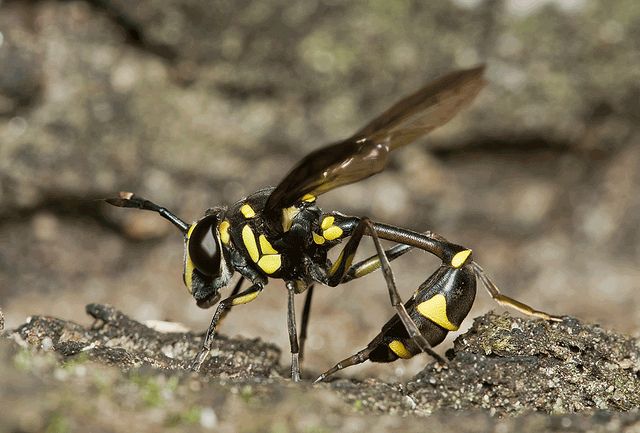
A bumblebee mimic (yep, that's a fly too!):
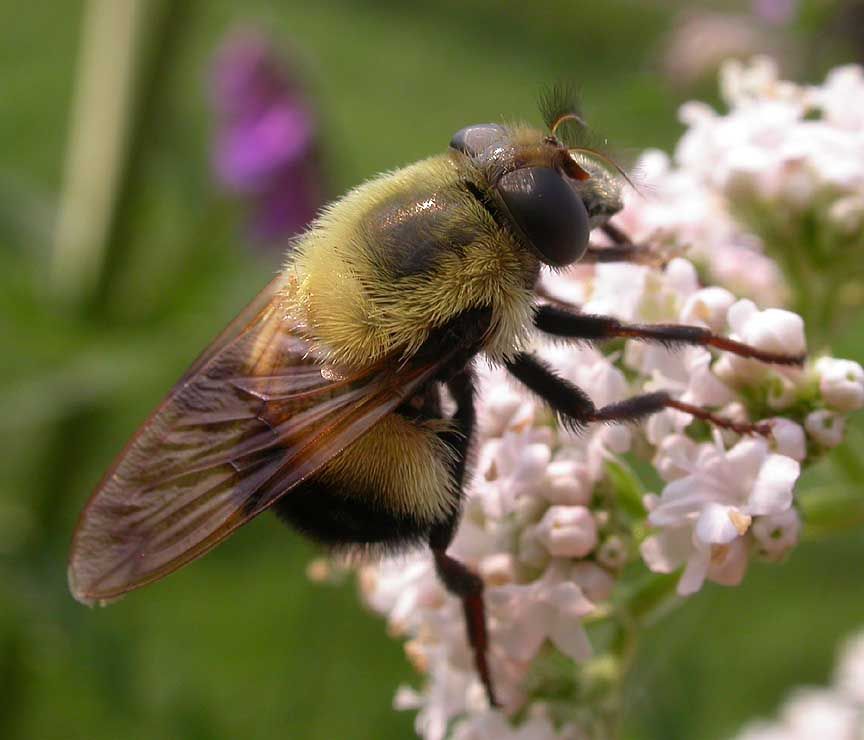
Mimicking aids in their survival...if things that want to eat you think you're dangerous, it goes a long way in prolonging your life!
3. Ephemeroptera
6. Isoptera
24. Diptera
Ephemeroptera, the mayflies.
This order of insects is thought to be the oldest group of flying insects. There are about 2,500 known species, nearly 650 are found in North America. When most people think of mayflies, they usually picture the huge swarms seen on lakes, but actually, relatively few species inhabit lakes. Most are found in small streams, ponds, and other water features.
Most live only a matter of hours as adults, never eating, only mating. The mouth parts you might see are completely vestigial, and where their digestive organs would be, there is only air. Their sole function in their adult flying form is reproduction. In essence, mayflies exhibit one of the most likely reasons that insects evolved flight: dispersal (get as many of your offspring spread as far and wide as you can). They spend most of their lives as nymphs, living in waterways feeding on algae, diatoms, and a few are even predatory.
A mayfly nymph:

and an adult:

Isoptera, the termites.
The termites have recently been combined with the order that includes cockroaches, but to make sure I had 30 choices for the bingo, I kept it split (plus...I'm not sure how the termites feel about being considered 'friends of cockroaches'!
Termites are incredibly social, building huge, complex colonies. At the heart of a colony is a queen (who can live for decades...up to a staggering 45 years!) and a king (who can live just as long) who lives and mates with her for life. Mature colonies can contain millions of individual termites, and with a queen that can lay 20,000 to 30,000 eggs a day, it's easy to see how these numbers are accomplished.
These incredible animals process an astounding amount of cellulose-based biomass, and are an integral part of the planet's recycling system. Some cultivate fungus, but all consume some sort of cellulose. No multicellular organism can process cellulose, and like cows and other ruminants, termites have microbes in their digestive tracts that help break down the parts of cellulose that they can't. Often in developed countries, termites are considered pests...some do eat wood.
The manner in which termites construct above-ground nests (some do have underground nests, and even nests you can see usually have extensive parts underground, too) have been highly studied. Even engineers have taken note, and all over the world, particularly in places with constantly hot climates, buildings engineered with termite nests in mind have been constructed that require little or no air conditioning to cool them. Termites orient their nests so the 'face' are east-west, and internal construction facilitates air flow that removes stale air and sucks in fresh air. The nest acts as a radiator to heat up in the morning and the central-air 'feature' keeps the nest from getting too hot.
An above-ground nest:

A humongous queen:

And her subjects, a winged adult ready for mating flight, a soldier, and a worker (from left):

Diptera, the true flies.
We all know what flies are...those annoying, buzzing things that always seem to be where we don't want them, potentially spreading something icky and just being general pests. Mosquitoes, craneflies ('mosquito-eaters' to some, though some species are herbivorous), and of course house flies are all included in this group. They're characterized by only having one 'true' pair of wings, with the other pair (behind the actual wings) having evolved into 'halteres', which stabilize a fly's flight and give it a lot of maneuverability.
With over 120,000 known species, dipterans are one of the 'major' insect orders. The fruit fly is heavily studied, and was key in unraveling the secrets of DNA. Flies are incredibly diverse, taking advantage of many niches and exploiting them to such great degree that we still don't fully understand some aspects of their survival. For example, the mosquitoes responsible for the spread of malaria have been studied for decades to figure out how to stop them from being a vector (carrier) for the disease. They're specifically locked into humans as their blood hosts and have influenced human evolution in such a way that shows many thousands of years have gone into that relationship (sickle-cell anemia is a result of this co-evolution; the disease is a result of an adaptation to combat malaria).
Dipteran diversity includes some interesting species. As with the bees, wasps, and ants, I'll share some images of the more unusual (and somewhat more appealing) flies.
Not sure what this fellow's story is, but he "really" wants us to see his abdomen:

A jumping spider mimic:

A wasp mimic (yes, that's really a fly!):

A bumblebee mimic (yep, that's a fly too!):

Mimicking aids in their survival...if things that want to eat you think you're dangerous, it goes a long way in prolonging your life!
Blog: http://ketta-ketta.blogspot.com/" target="_blank" target="_blank
WIP: http://www.crossstitchforum.com/viewtop ... =6&t=12786" target="_blank" target="_blank (bug)
http://www.crossstitchforum.com/viewtop ... =6&t=13419" target="_blank (Serenity)
WIP: http://www.crossstitchforum.com/viewtop ... =6&t=12786" target="_blank" target="_blank (bug)
http://www.crossstitchforum.com/viewtop ... =6&t=13419" target="_blank (Serenity)
Re: New November Bingo: INSECTS! 11th numbers posted
Seems like the odds would say that either Niki or I would have at least one pick, but we are both where we were the last time 8/10 for Niki and 7/10 for me. Good luck to those who are close. We could have a Bingo today, I think.
Carole

Carole
WIPs
Star Wars Afghan:Chewbaca
HAEDs:
O Kitten Tree
Dancing with the Cat
Everything else "on hold"
2022 Finished: Star Wars Afghan: Princess Leia, Obi-Wan Kenobi, Yoda, Finn, Rey, Poe, Han Solo,Darth Vader, BB8,Luke Skywalker
Star Wars Afghan:Chewbaca
HAEDs:
O Kitten Tree
Dancing with the Cat
Everything else "on hold"
2022 Finished: Star Wars Afghan: Princess Leia, Obi-Wan Kenobi, Yoda, Finn, Rey, Poe, Han Solo,Darth Vader, BB8,Luke Skywalker
Re: New November Bingo: INSECTS! 11th numbers posted
still at 8/10. those mimics really do look like a wasp and a bumblebee!
Mables 2016 SAL
Holland Springtime Mandalla (chatelaine)
Re: New November Bingo: INSECTS! 11th numbers posted
Aloha ... I'm not quite sure what to do, but I THINK I HAVE BINGO. Just sent Ketta a PM. I'm in a state of shock! --Carol in Honolulu, hoping I'm right!
Re: New November Bingo: INSECTS! 11th numbers posted
yay for your bingo!
Mables 2016 SAL
Holland Springtime Mandalla (chatelaine)